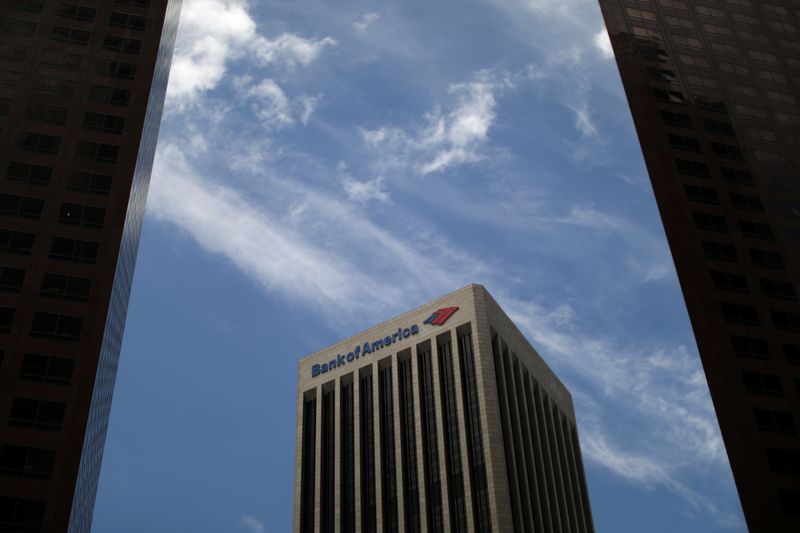BofA profits fall as provisions rise, but beat estimates on surge in investment banking By Reuters

Mehnaz Yasmin, Saeed Azhar
(Reuters) – Bank of America reported a decline in first-quarter profits as lenders secured more funds to cover underperforming loans, but still beat estimates on a surge in investment banking fees.
A resilient U.S. economy, buoyant stocks and a flurry of large deals have rekindled hopes for a nascent economic recovery, but industry executives expressed cautious optimism.
Investment banking fees rose 35% from a year ago to $1.6 billion in the reported quarter, partially offsetting a decline in interest payments. Last month Chief Financial Officer Alastair Borthwick said he expected investment banking profits to rise 10 to 15 per cent in the first quarter.
Revenues in the segment also rose at rivals JPMorgan Chase (NYSE:) and Citigroup in the first quarter, driven by gains in debt and equity markets.
Excluding one-time items, Bank of America earned 83 cents per share in the quarter ended March, beating analysts’ average estimate of 76 cents per share, according to LSEG data.
Sales and trading revenue rose 2% to $5.2 billion, while equities rose 15% and fixed income currencies and commodities (FICC) fell 4%.
“Bank of America’s Sales and Trading business continued its strong 2023 momentum this quarter, posting its best first quarter performance in a decade,” said Brian Moynihan, CEO.
Meanwhile, the bank built $1.3 billion in provisions in the first quarter, up from $931 million a year ago.
Changing expectations about lower U.S. interest rates and an uncertain economic outlook have made predicting future profits more difficult, bank executives said last week.
If the Fed keeps interest rates higher for longer in the coming months, lenders that have profited handsomely from rate hikes over the past two years could see those gains increase even further. However, if a potential recession prevents borrowers from receiving loans, their income could decline.
Bank of America’s consumer segment revenue fell 5% to $10 billion in the quarter, primarily due to lower deposit balances.
Net charge-offs, or liabilities not likely to be recovered, increased to $1.5 billion from $807 million in the year-ago quarter, primarily due to increased credit card losses.
Bank of America is one of a number of large lenders, including rival JPMorgan, weighing the possibility that the U.S. Federal Reserve will cut interest rates this year. These measures could reduce banks’ interest payment income but could potentially stimulate economic activity and demand from borrowers.
BofA’s net interest income (NII) – the difference between loan income and deposit payments – fell 3% to $14 billion in the quarter due to higher deposit costs and moderate loan growth.
Bank of America also spent $700 million in the reported quarter to replenish the government’s deposit insurance fund, which lost $16 billion in 2023 to protect depositors at two banks that failed.

Profits at BofA Merrill Wealth Management rose about 10% to $1 billion, driven by record revenue driven by rising stock valuations and higher fees due to higher client balances.
The sector’s assets under management increased to $1.4 trillion from $1.3 trillion in the fourth quarter.



